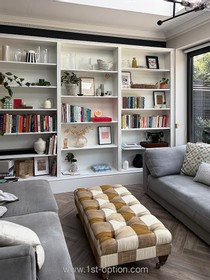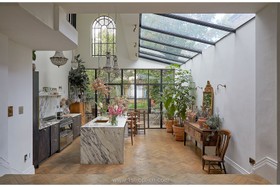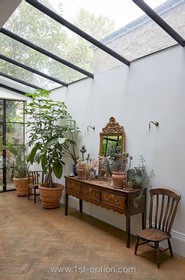You finally have your dream home, but before long you realise that you need more space. If moving is not an option you could consider a house extension, modern Britain’s answer to all your space conundrums. The extension may well be your best solution, however, before entering into the project you should be aware of all the information needed to get the most out of your project. Not all extensions are created equal and there are, in fact, five different styles of extension to choose from. Each style has its positives and negatives and before jumping in you should think about which will suit your house. Extending your home is likely to be an expensive project, so it’s important to get it right and make it work in the best way for you.
Rear Extensions
Unsurprisingly, as the name suggests, a rear extension takes place at the back of your property, extending onto your garden or patio area. Typically, they are used to extend the living or kitchen space, to create a larger open plan area that blends the indoor space with the outdoors. If you’re thinking about embarking on a small rear extension, this can usually be done without planning permission - saving time and hassle. Small rear extensions can take up to 4 months, while large extensions may take 6 months minimum. Price-wise, you are looking at anything from £40,000 all the way up to £70,000, if you’re lucky enough to live in London. Naturally, the price also varies depending on the size and quality of materials used. Here at 1st Option, we are privileged to represent a selection of the most incredible properties to feature rear extensions - check out Capri, Chevron and Curious, to name a few.
Side Return Extensions
Most period properties tend to have an alleyway or path down the side for bins and bits and bobs, or as a side entrance to the back garden. These tend to add little value to the overall living experience within the house. For this exact reason, side return extensions are becoming increasingly popular, furthermore, they actually add monetary value to your property as well. In terms of the extension itself, it’s typically fairly small in terms of how far it comes out, however, it runs the length of the house; so can have a transformative effect on the overall appearance of the house without needing planning permission. If you are worried about losing light to the side windows you currently have, they can be replaced with skylights that actually bring in far more light. Expect to forecast around £20-30,000 and 3-4 months to complete. Check out Florence and Wavertree for some great examples of side return extensions.
Wrap-Around Extensions
Yes, you guessed it, a wrap-around extension combines both a side return and rear extension, moving the outer walls in two directions. They are perfect for family living, as they dramatically extend the size of the living space - creating vast open plan places with kitchen, dining and living spaces all in one room. With all this extra space, it allows you to blend your indoor and outdoor environments effortlessly, with glass walls at the back and skylights bringing in light and a flow between the garden and home. Costs can vary for these types of extensions, however, roughly you can expect to start at around £55,000 and take up to 6 months to finish. Check out our range of wrap-around extensions, including Billie, Charcoal, Citrine and Nash.
Double Storey Extensions
A double storey extension refers to an extension that takes one of the three styles mentioned above and extends over two floors as opposed to one. The advantages that a double storey extension gives are that it provides you double the space at far less than double the cost. Generally speaking, a double-storey extension will cost you only 50% more than a single storey one. This is because the bulk of the costs come from building the foundations, once they are laid, the additional floor is far less work. Due to light-blocking, most double-storey extensions will need planning permission, so that is something you will have to consider. Double height extensions are fairly hard to come by, however, here at 1st Option, we represent Lotus, Teignmouth and Honeycomb, which all feature great examples of these styles of extensions.
Dormer Extensions
If you have an attic in your house that is just gathering dust or storing all your junk that you haven’t looked at in the past 5 years, then a dormer extension could be a great option for you. A dormer extension removes the pitch of your roof and in turn creates a flat roof in line with the current top of the pitch. This gives you a squared-off, larger box space that is ideal for master suites or additional children’s bedrooms. As they don’t tend to take up much added space above the property, planning permission is rarely needed and they are very affordable compared to the other extension styles. Typically taking around 3-4 months to complete they are a great option if you don’t want to move out during the project.


























































































































































































































































































































































































































